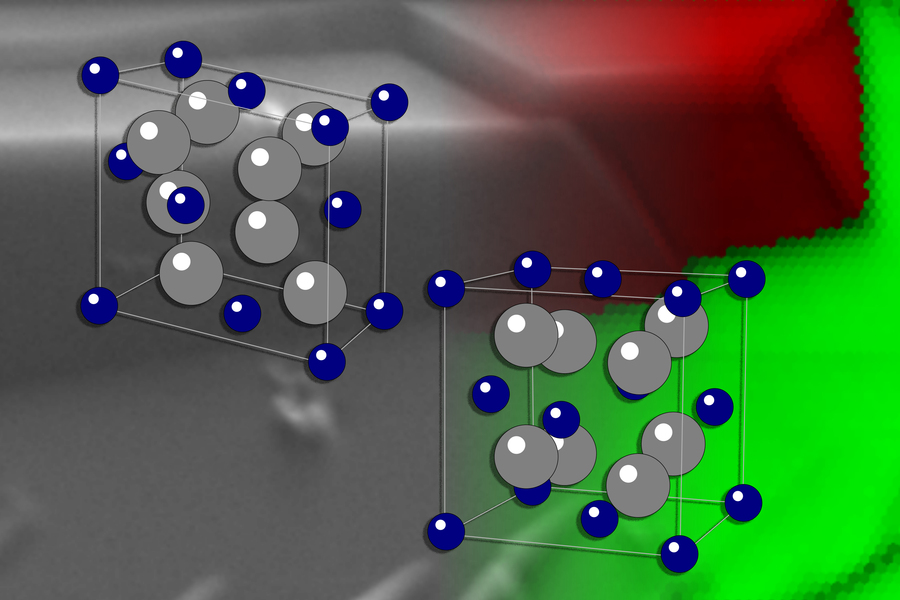创新背景
形状记忆金属可以通过加热或以其他方式触发从一种形状恢复到另一种形状,在各种应用中都很有用,作为可以控制各种设备运动的致动器。
形状记忆材料有两种不同的形状,并且可以在它们之间来回切换。它们可以很容易地被温度、机械应力、电场或磁场触发,以施加力的方式改变形状。
形状记忆材料是一种固态材料,可以完成所有这些工作。它不需要系统,也不需要很多零件。它只是一种材料,会自发地改变形状。
创新过程
形状记忆金属长期以来一直被用作各种设备中的简单致动器,但受到所用金属可实现的工作温度的限制,通常最多几百摄氏度。陶瓷可以承受更高的温度,有时高达数千度,但以其脆性而闻名。麻省理工学院的团队已经找到了一种方法来克服这一点,并生产出一种可以在不累积损坏的情况下致动的陶瓷材料,从而使其能够通过许多使用周期可靠地作为形状记忆材料发挥作用。

世界上存在的形状记忆材料都是金属,当在原子水平上改变材料的形状时,可能会造成很多伤害。原子必须重新洗牌并改变其结构。当原子移动和重新洗牌时,很容易将它们放在错误的位置,产生缺陷并损坏材料,从而导致它们摇摇欲坠并最终分崩离析。
即使最终会得到一些可以变形的材料,但最终它们会降解,它们会分崩离析。而且由于金属具有很强的延展性,它们更耐损坏,因此该领域真正关注的是金属。
相比之下,陶瓷根本不能很好地承受损坏,通常不会弯曲而是断裂。氧化锆是已知具有形状记忆特性的一种,但它在形状记忆周期中非常容易累积损伤,这种特性测量为高滞后。

研究人员采用了许多现代科学工具:计算热力学、相变物理学、晶体学计算、机器学习,并将所有这些工具以一种全新的方式结合在一起,以解决创建这种材料的问题。最后,氧化锆发生了新变化。它的外观、气味和味道就像人们已经知道和使用的氧化锆一样,包括像珠宝中的立方氧化锆。但是,不同元素的一些原子已经以改变其某些性质的方式被引入其结构中。
创新关键点
研究人员采用了许多现代科学工具:计算热力学、相变物理学、晶体学计算、机器学习,并将所有这些工具以一种全新的方式结合在一起,得到了新型氧化锆——不同元素的一些原子已经以改变其某些性质的方式被引入其结构中。
创新价值
形状记忆材料的一个常见应用是溢流阀,如果某物的储罐超过一定的临界温度,阀门就会被该热量触发,自动打开以释放压力并防止爆炸。新的陶瓷材料现在可以将这种能力扩展到比现有材料所能承受的更高的温度情况。
例如,引导喷气发动机内部气流的执行器可能是一个有用的应用。虽然那里的整个环境很热,但有各种气流通道受到控制,因此这些气流可用于触发形状记忆陶瓷,方法是根据需要将较冷或较热的空气引导到设备上。
Zirconia ceramics can be used as new memory materials
Shape memory metals have long been used as simple actuators in a variety of devices, but are limited by the achievable operating temperatures of the metals used, usually at most a few hundred degrees Celsius. Ceramics can withstand higher temperatures, sometimes up to thousands of degrees, but are known for their brittleness. The MIT team has found a way to overcome this and produce a ceramic material that can be actuated without cumulative damage, thus allowing it to reliably function as a shape memory material through many cycles of use.
The shape-memory materials that exist in the world are all metals, and a lot of damage can be done when changing the shape of materials at the atomic level. The atom must be reshuffled and its structure changed. As the atoms move and reshuffle, it's easy to put them in the wrong places, creating defects and damaging the material, causing them to falter and eventually fall apart.
Even if you end up with some materials that can deform, eventually they degrade, they fall apart. And because metals are very malleable, they are more resistant to damage, so the field is really focused on metals.
Ceramics, by contrast, do not withstand damage well at all and usually break rather than bend. Zirconia is known to have shape memory properties, but it is very easy to accumulate damage during the shape memory cycle, which is measured as high hysteresis.
The researchers took many modern scientific tools: computational thermodynamics, phase transition physics, crystallographic calculations, machine learning, and brought all of them together in an entirely new way to solve the problem of creating this material. Finally, something new happened to zirconia. It looks, smells and tastes just like the zirconia people already know and use, including cubic zirconia like in jewelry. However, some atoms of different elements have been introduced into its structure in ways that alter some of its properties.
智能推荐
智能制造 | 新型“材料显微外科”技术可提高废物回收效率
2022-09-27新南威尔士大学可持续材料研究与技术中心(SMaRT)的“微回收科学”先驱们开发出了一项有望提升先进制造业的新技术。
涉及学科涉及领域研究方向新材料 | 原子级超薄材料有望提高光电技术使用效率
2022-06-29采用原子结构排列创造超薄晶格,改进半导体芯片在光电技术中的使用效率。
涉及学科涉及领域研究方向新材料 | 创新开发专用材料可更精确地控制光的偏振
2022-10-13研究人员使用一种只有三个原子厚的专用材料,可以比以往更精确地控制光。
涉及学科涉及领域研究方向新材料 | 创造纳米多孔结构以开发高度隔热性木质绝缘材料
2022-09-22创新制造纳米多孔结构,通过控制沉淀过程创造高精准的纳米孔隙率,从而产生纳米嫌我网络,开发新型木材绝缘材料。
涉及学科涉及领域研究方向